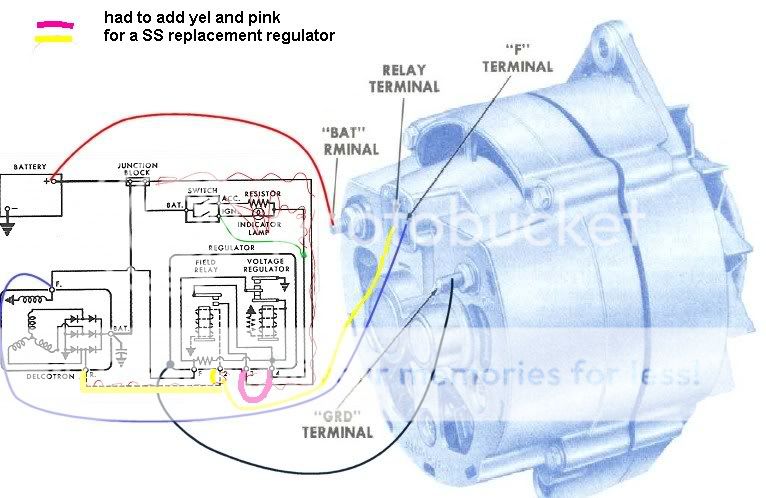Hi! I have a 1940 Farmall M. It was converted to 12 volt with a Delco Remy alternator by the previous owner. This alternator has a ground terminal along with the BAT, R, and F terminals. There is no external "silver box" regulator connected to the alternator or the electrical system. The battery was going dead with use of the tractor. There was only one wire hooked up to the alternator (the Bat terminal was hooked up to the ammeter). I read about 12 volt conversions and wired up the F or 2 terminal to the BAT term. Then I wired a warning light from the R or 1 terminal to the ignition switch (on the side that the coil is on). I turn the key on and the warning light does not light. I start the tractor and the warning light turns on. I throttle up the tractor and the warning light glow VERY bright (so bright I think it might burn out soon). Any ideas? Could this have been a one wire conversion and I"ve added the incorrect stuff to this? Could I be missing the silver box voltage regulator??? Should I get a newer alternator or add a voltage regulator? (I think this is a mid 60"s alternator because of the R and F terminals) Let me know what you think... as I"m still reading about this!! And thanks for the help!!
Troy
Troy




